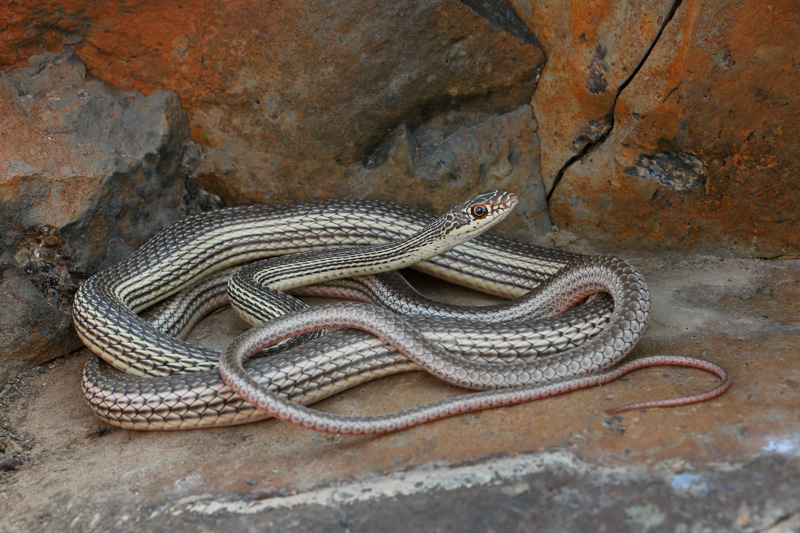Striped Whipsnake
(Masticophis taeniatus)
 Like most other nonvenomous snakes found in the Southwest, the striped whipsnake is a member of colubrid family — closely related to the coachwhip and to kingsnakes. Measuring anywhere from 30-72 inches in length as adults, these desert dwellers are fairly slender and are named for the light-colored lateral stripes that stand out against their darker backs.
Like most other nonvenomous snakes found in the Southwest, the striped whipsnake is a member of colubrid family — closely related to the coachwhip and to kingsnakes. Measuring anywhere from 30-72 inches in length as adults, these desert dwellers are fairly slender and are named for the light-colored lateral stripes that stand out against their darker backs.
Striped whipsnakes are found throughout much of the western United States and in Northern Mexico, as comfortable among sand and sagebrush as they are among pines and pinyon-junipers.
Whipsnakes prey on lizards, frogs, small mammals, birds, and also other snakes — including rattlesnakes. The species is oviparous, meaning females lay eggs instead of birthing live young (which some snake species are known to do). Laid in clutches of 3-12, the eggs usually hatch after incubating for about 50 days. They make their homes in abandoned burrows and can often be found in the vicinity of streams and other bodies of water.